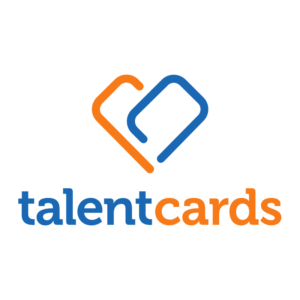Microlearning: Small Investment, Big New Hire Onboarding Results
First dates. They can be tragic, average, or the beginning of a mutually beneficial relationship. And for those of us who have been around the block a few times, the same can be said about onboarding employees.
For the uninitiated, employee onboarding is the official process of introducing new hires to their working environment, role, and responsibilities. You don’t want to offer boring and mediocre onboarding because, like a first date, the employee will eventually run for the hills.
A great onboarding experience, on the other hand, will likely intrigue and engage your new hire into making a real commitment to your company.
So, how do you create a new hire onboarding program that is engaging, interesting, and informative? How do you make a great first impression and get your new hires to become productive fast?
The answer is microlearning.
Microlearning is a lightweight approach to online learning. And it’s the perfect way to make your onboarding process faster, better, and so much more fun. In this article, we'll explore how.
Τhe Main Benefits Of Using Microlearning In Employee Onboarding
1. Microlearning Boosts Knowledge Retention
Instead of overloading your new hires with pages and pages of information they don’t need, a microlearning approach forces you to deliver the most important and actionable knowledge. By reducing the amount of material retention will go up.
2. Microlearning Is More Engaging
It’s the difference between having to read a 1000-page textbook and 20 index cards. It's much easier for a learner to maintain their enthusiasm and focus when studying bite-sized chunks of information.
3. Microlearning Speeds Up Onboarding
Since microlearning encourages delivering only the essentials, employees can go through a new hire onboarding program much faster. The quicker they get through onboarding, the faster they can get to work.
4. Microlearning Gives Learners More Freedom
Combine microlearning with a smartphone, and you’ve got a match made in heaven. Not only can learners study from anywhere and at any time, but they can do it without investing hours they don’t have.
For example, a 10-minute commute is enough for them to go through a large chunk of their onboarding material. It’s even possible for new employees to begin (and complete) their onboarding from home, and be prepared for work before they arrive at the office for their first day.
Revamp Your New Hire Onboarding Process With Microlearning
Now, let's go through some specific ways you can leverage microlearning for your businesses’ employee onboarding.
1. Reduce Risk Of Compliance Training
When you condense compliance training to its essence, it's a list of do's and don'ts. So, you could, for example, create a unit for each topic you’re covering, i.e., safety training, workplace ethics, environmental guidelines. And pack each unit with relevant information in a small number of learning cards.
Compliance training is standard in many onboarding programs, especially in highly-regulated markets. By using a microlearning approach, companies can raise retention rates and feel more confident that their new hires won’t make costly mistakes.
2. Get Your Team Up-To-Date Fast With Product Training Or On The Job Training
Microlearning is also a good fit for teaching new hires the ins and outs of your product or service. It’s especially suitable for companies operating in industries where new products are released fast and often (looking at you, retailers!)
Plus, once employees have completed their onboarding, they can still refer back to their training content and use it as a general reference guide.
3. Use Micro-Assessments
Microlearning comes with its version of tests and assessments called micro-assessments.
Like microlearning content itself, micro-assessments, are much easier for instructors to set up, and for learners to complete, and are an excellent tool to test whether your new hires have retained the material in your onboarding.
In fact, employers could run micro-assessments periodically, long after the initial onboarding period, to identify employees that might need a reminder course.
4. Introduce Your Team
A new hire can often feel out of touch with their new environment and coworkers. While some personalities thrive in these situations, others might shy away from introducing themselves to others (especially to those higher up). In some cases, depending on the size of the company, it might not even be practical to meet everybody.
A great way to ease people in is to leverage microlearning. Have each team member introduce themselves using photos and a short paragraph, or perhaps a short video. In it, they’ll explain what their role is, what services they can offer to their colleagues, and so on.
This gesture will not only make the first few weeks of a new hire's life much easier, but it’ll signal to them that you maintain an open and friendly company culture.
5. Introduce Your Company Policies And Culture
Microlearning can be an excellent way to introduce employees to your company's policies and overall culture.
For example, training units can cover such diverse topics as proper office behavior and attire, office equipment use, leave policy, career advancement paths, and organizational structure.
Now that you’re aware of the benefits of microlearning and the ways it can be applied to improve employee onboarding, one question remains: How can you create microlearning content and deliver it to your new hires?
Introducing Microlearning With TalentCards For Next-Generation Onboarding
TalentCards is a microlearning authoring tool and delivery system in one. It allows instructors to build content and manage users on the web. But training is delivered to employees through a mobile app (available on iOS and Android).
TalentCards is built by Epignosis, the team behind award-winning learning management platforms TalentLMS and eFront. Our team-based TalentCards on the popular "flashcard" paradigm of learning (we all remember from high school) and upgraded it to the new way of working and training.
No matter your tech literacy, TalentCards is easy to use. As an instructor, you can create beautiful learning cards complete with text, pictures, and videos. And the accompanying mobile app used by learners is just as easy.
The best part is that with TalentCards training doesn't feel like a chore. It feels like you’re playing an engaging game on your smartphone. By leveraging the power of mobile, microlearning, and learning cards, using TalentCards can boost knowledge retention, completion rates, and probably the fun factor in your onboarding and other types of employee training.
Microlearning Is In The Cards
Sign up for a free TalentCards account today, and explore how microlearning can make your new hire onboarding program simpler, faster, and more effective.









